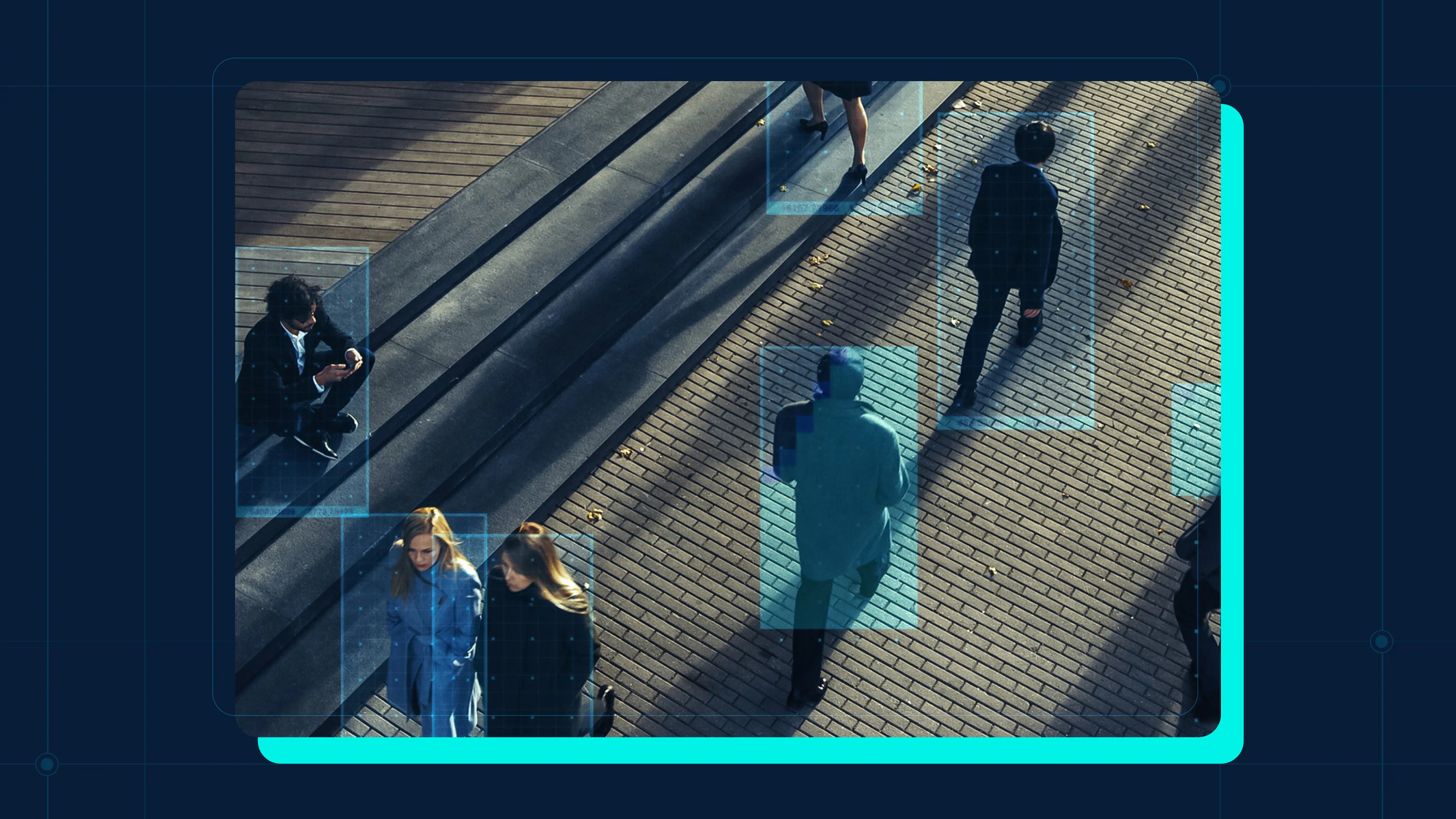As AI innovation continues to accelerate, more video surveillance vendors that sell IP cameras, cloud cameras, and/or cloud NVRs are attempting to retrofit AI into their products. In this crowded landscape, it’s important to understand the differences beyond the marketing so that you can decide which vendors align more with your organizational needs.
There are three tiers of AI offerings to decipher between:
- Tier 1: Motion, people, and vehicle detection
- Tier 2: Facial recognition and license plate recognition
- Tier 3: AI assistants, universal search, and action detection
Understanding which tier is needed for your organization is important.
{{WEBINAR_BANNER}}
Tier 1 AI: Motion detection, people detection, and vehicle detection
The first tier of AI offerings includes motion, people, and vehicle detection. These features have become common across modern systems and provide a base level of AI-driven value.

Motion detection cameras can trigger recordings or alerts when any movement is detected within a monitored area. While this feature is useful in tracking unexpected activity in an area during off hours, it is missing the context of what is in motion.
People detection takes this a step further, enabling the camera to distinguish human presence. This feature facilitates automated alerts when a person is recognized in the scene. This is useful, for example, in manufacturing plants to understand where employees are congregating to avoid potential worker safety incidents.
Vehicle detection allows AI cameras to identify and differentiate vehicular presence, which is useful in applications like counting the number of vehicles that are in a parking lot to monitor occupancy levels, or alerting loading bay workers when a delivery truck arrives.
Tier 2 AI: Facial recognition and license plate recognition
The second tier includes features such as facial recognition and license plate recognition. These features can cover more advanced use cases that drive faster processing and improved business value and safety.

Facial recognition can apply for various use cases across industries. For example, a retail store could enable tailored customer experiences by identifying frequent shoppers and offering personalized recommendations or discounts, fostering customer loyalty. In law enforcement and public safety, facial recognition software can be used to aid in locating missing persons or identifying suspects by cross-referencing facial data with criminal databases or prior video footage.
License plate recognition can be be applied in transportation and parking management.For instance, LPR is able to facilitate automatic toll collection on highways, or optimize parking facilities by automating entry and exit processes. In an industry such as auto services this technology can be applied to quickly process damage claims by locating relevant footage by simply inputting a license plate number.
Tier 3 AI: AI assistants, universal search, and action detection
The third tier has capabilities that leverage foundation models. As a result, this tier offers advanced features that unlock new use cases that significantly expand the business value of video.

AI assistants can automatically index a physical environment, categorize the objects and concepts in the scene, and provide intelligent prompts and contextual alerts to improve business safety and efficiency. With AI assistants, users can get a notification automatically when someone is in a restricted zone or not following safety protocol on the manufacturing floor, so they could take action before anything goes wrong.
Universal search allows users to run a search across all cameras for specific custom objects or concepts, and adaptive search allows users to tailor search results and adapt them to their preferences. These functionalities enable quick and precise data retrieval.
Action detection (pose and speed) allows users the ability to understand how people or objects are positioned and the speed at which they are moving. For example, pose detection could be used in a workplace setting to alert medical resources if someone is having a seizure, or at a school if children begin to fight.
Evaluating your AI options
All AI products are not created equally. The most important underlying difference that affects the long-term AI strategy is the choice of architecture of the system. Products from each era of video surveillance - IP cameras, cloud cameras, Cloud VMS, AI Camera Systems - incorporate different hardware and software architectures to enable AI in their products.

It is important to evaluate if the product can deliver in practice the value that it promises on paper. Key questions to keep in mind when evaluating your AI options for your next camera system include:
- Usability - Does the product deliver AI at a level of performance (accuracy and latency) to solve your users’ problems exactly when they need it solved?
- Interoperability - Does the product work with your existing cameras and networks?
- Scalability - Is it easy to add more locations, cameras, and users to allow the product to scale into your organization?
- Cybersecurity - Does the product provide you with the ability to easily provision and monitor user access?
Because of the differences in underlying technologies, all AI products are not created equally. It is important to evaluate if the product can deliver in practice the value that it promises on paper.
Ready to learn more? Get started today.























































